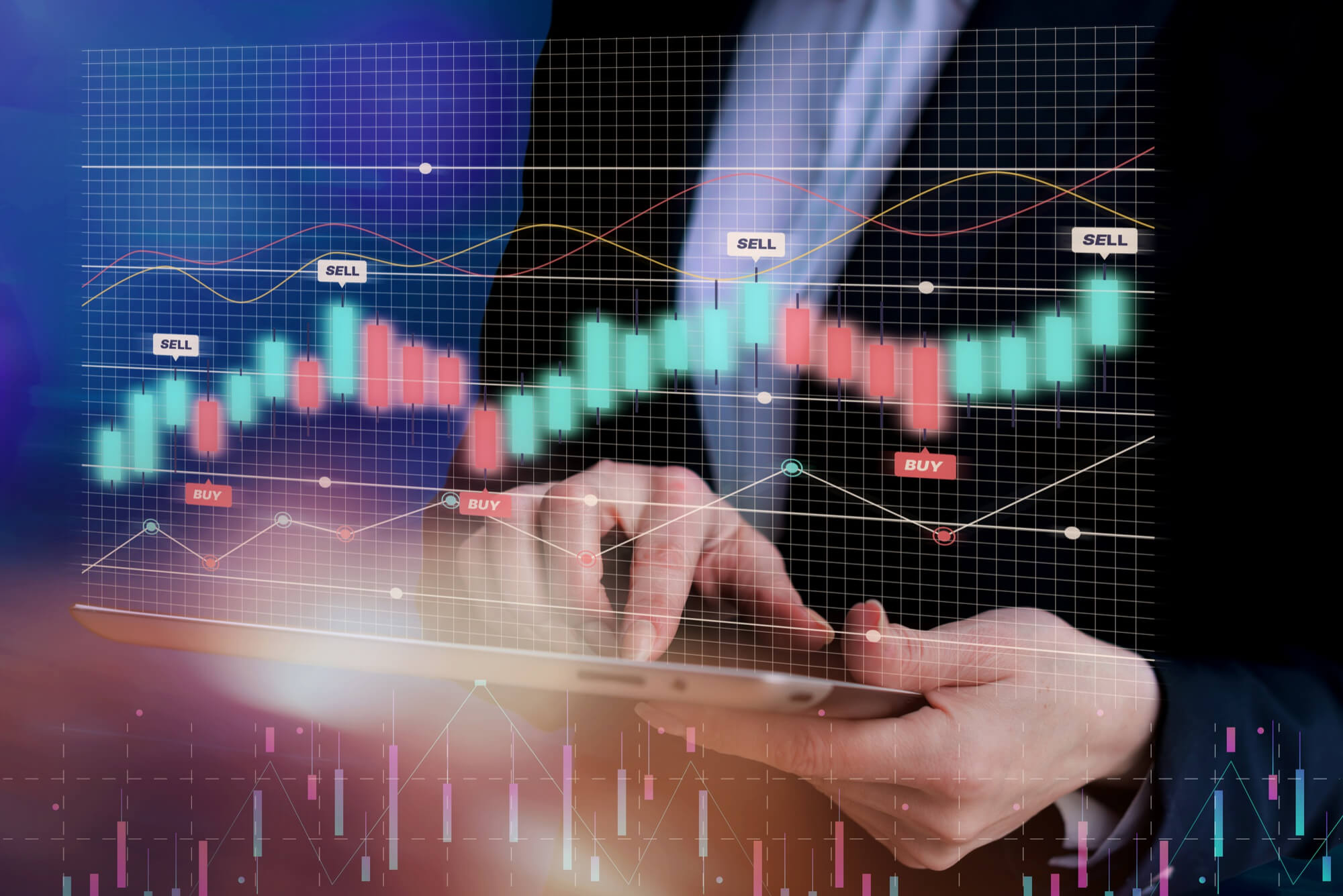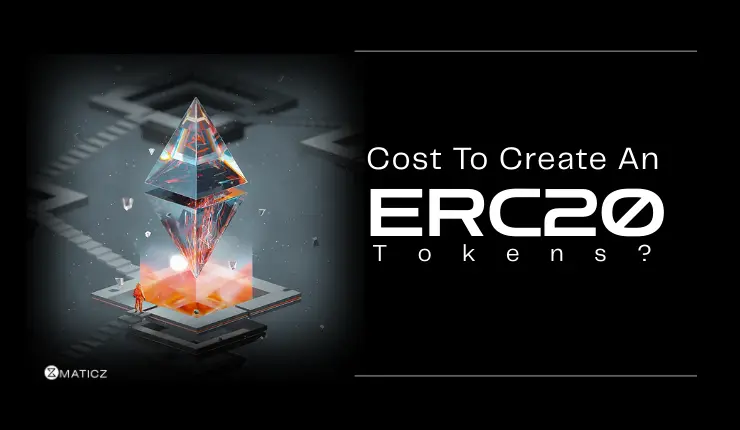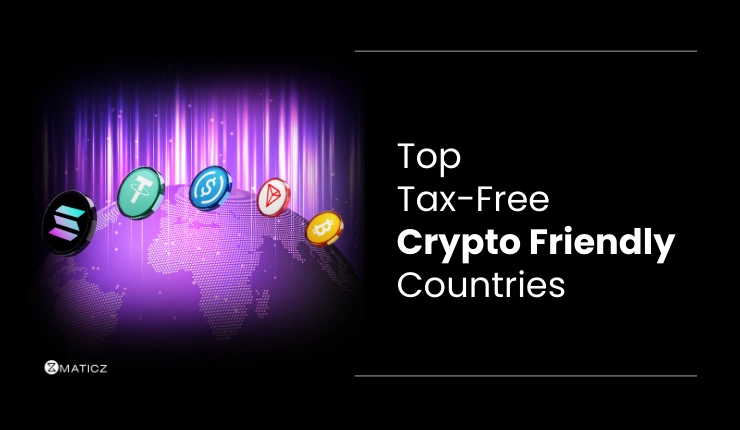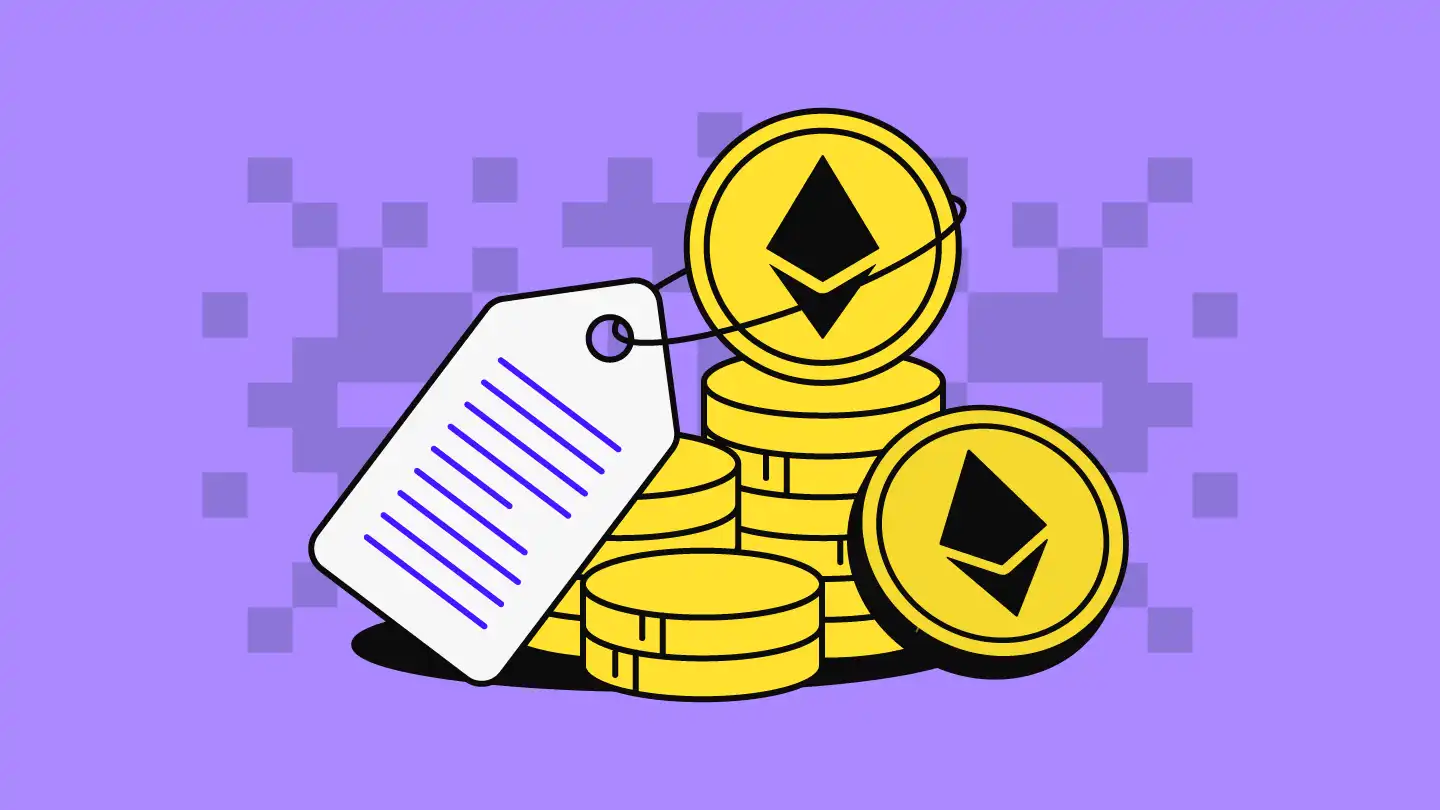Share Posts

Crypto Derivatives Exchange Development
89
6541
103
Top-Rated Crypto Derivatives Exchange Development Company
Crypto derivatives exchange development is a systematic process of designing, building, and deploying a trading platform that enables the buying and selling of cryptocurrency derivatives with no intermediaries.Unlike other exchanges, a crypto derivatives trade uses blockchain technology and smart contracts to enable users to trade instruments like futures and options in a decentralized manner. As the demand for complex trading tools increases, a strong crypto derivatives exchange has an increasing opportunity to cater to the needs of modern traders seeking flexibility and performance in the crypto marketplace.
Maticz is a reliable crypto derivatives exchange development company with expertise in the development of customizable, high-performance trading platforms. We are supported by an experienced team of blockchain developers, who are qualified and have the experience to create advanced exchange platforms with captivating trading experiences supported with robust security and user-friendly features. We also provide ongoing support and consultation to clients to empower them to launch successful exchanges while navigating the complexities of the digital asset landscape. Join us today to stand out in the competitive crypto marketplace.
Exploring the Next Big Opportunity in Digital Assets
Developing a crypto derivatives exchange is one of the most promising possibilities within the digital asset marketplace. Traders are constantly looking for efficient tools to take advantage of market volatility, and platforms offering derivatives are in excessive demand.
This sector enables users to hedge risks, speculate on price movements, and engage in higher trading techniques. In addition, the DeFi systems offer an exciting avenue for developing crypto derivatives exchanges that will enable peer-to-peer trading without intermediaries.
This growing interest from investors further shows a shift toward more sophisticated trading mechanisms in the crypto space. By focusing on derivatives exchange development, entrepreneurs can be involved in this lucrative market, positioning themselves at the forefront of the evolving digital economy.
Our Crypto Derivatives Exchange Development Services
At Maticz, we recognize that every business is unique. Thus, we offer various exclusive crypto derivatives exchange development services designed to meet the changing demands of businesses.
Custom Exchange Development
We develop customized crypto derivatives exchanges based on your specific business requirements and ensure scalability as well as flexibility. Our team will utilize advanced technologies to design user-friendly interfaces and strong back-end systems. We prioritize overall performance and reliability to facilitate a seamless trading experience for users.
Crypto Derivatives Software Development
Our software development services include comprehensive solutions for crypto derivatives trading, designed to optimize transaction speed and accuracy. We enforce superior algorithms and trading features, catering to both new and experienced traders. Rigorous testing ensures strong functionality and performance beneath numerous marketplace conditions.
Integration Services
We are experts in integrating third-party services, which include wallet solutions, payment gateways, and marketplace data feeds, to enhance your exchange's capability. Our team guarantees that integration processes are seamless and secure, minimizing downtime. This enables a unified user experience, making your platform competitive in the marketplace.
Exchange Maintenance Services and Support
Our maintenance services ensure that your exchange operates easily and successfully at all times. We offer regular updates, troubleshooting, and assistance to deal with any operational issues. Our dedicated support team is available 24/7 to help clients and ensure the platform remains stable and updated.
Exchange Security Solutions
We implement advanced security measures, which include multi-signature wallets, DDoS protection, and encryption protocols, to safeguard your exchange. Regular security audits and vulnerability tests are conducted to become aware of and mitigate potential threats. This dedication to protection ensures consumer trust and regulatory compliance.
Consultation
Our consultation offerings guide clients via the complexities of launching and dealing with crypto derivatives exchanges. We offer insights on regulatory compliance, marketplace evaluation, and technology choices. Our expert team provides personalized strategies to help maximize marketplace potential and operational efficiency.
Popular Crypto Derivatives Trading Software Categories We Excel In
We create dynamic and engaging derivatives trading software that helps to feel the immersive trading experience. With a focus on smooth transitions and robust security features, we offer a variety of crypto derivative exchanges.
Futures
We develop sophisticated futures trading platforms that allow users to hedge or speculate on the forthcoming price of cryptocurrencies. Our solutions feature robust order sorts, real-time marketplace records, and analytics tools for knowledgeable trading choices. Users benefit from enhanced liquidity and hazard management strategies.
Forward
Our forward contract solutions allow parties to lock in fees for future transactions, decreasing exposure to marketplace volatility. We construct intuitive interfaces for negotiating agreement terms and execution. This flexibility permits traders to devise their investments with greater certainty.
Optional
We provide comprehensive options trading software that lets users buy and promote rights to cryptocurrencies at predetermined charges. Our platform encompasses diverse alternatives like advanced pricing models and risk assessment tools. By empowering users with strategic trading tools, we strengthen their marketplace participation.
Perpetual Swaps
Our perpetual swap solution offers users a unique manner to exchange cryptocurrencies without expiration dates, accommodating dynamic market strategies. We implement leverage alternatives, allowing investors to maximize their capital performance. Comprehensive risk control features promote user confidence in their buying and selling decisions.
Exclusive Crypto Derivatives Exchange Modes We Provide
One-Way Mode
In one-way mode, traders can only maintain positions in one route, simplifying the trading procedure and decreasing complexity. This mode is ideal for customers who decide upon an honest approach to buying or selling derivatives. It encourages a focused buying and selling approach, minimizing capability dangers.
Hedge Mode
Hedge mode allows traders to open positions that counterbalance current holdings, supplying chance control against unfavorable price movements. This feature is crucial for experienced traders searching to guard profits and mitigate capability losses. Advanced analytics allow users to use the information wisely in making hedging decisions.
Cross Margin
Our cross-margin mode optimizes the usage of available equity across multiple positions, granting greater trading flexibility and reduced margin requirements. This technique promotes capital utilization and allows traders to preserve larger positions. Thorough stress testing and risk assessments ensure consumer safety.
Isolated Margin
Isolated margin mode allows traders to allocate a particular amount of margin to individual positions, protecting their account balance from liquidation risks. This is particularly beneficial for risk-averse traders looking to manage exposure effectively. Our intuitive interface simplifies margin management and position monitoring.
Features of Our Crypto Derivatives Trading Software
User Features
User-Friendly Interface
Low Latency Order Execution
24/7 Customer Support
Flexible Saving Accounts
High-Performance Trading Engine
Trading Contest
Partial Close Orders
Stop-Loss & Take Profits
Cross-Platform Trading
Clear Dashboard
Advanced Charting Tools
View Orders and Trade History
Admin Features
Trade Monitoring
KYC/AML Compliance Tools
Customizable Reporting
Audit Trail
Order-Book Management
Liquidity Management
Role-Based Access Control
Backup & Recovery Plans
User Account Management
Market Maker Tools
Transaction History
Dynamic Fee Adjustments
Security Features
Two-factor authentication (2FA)
Cold Storage For Funds
SSL Encryption
DDoS Protection
Multi-Signature Wallets
24/7 Security Monitoring
Incident Response Plan
Data Anonymization
Automatic Logout
Tamper-Proof Ledger
Biometric Authentication
Bug Bounty Program
Add-ons
Futures Calculator
Referral Program
Customizable Trading Bots
Staking Options
Advanced Order Types
Multi-Language Support
News Feed Integration
Tax Reporting Tools
Advanced Research Tools
Cross-Chain Trading
Yield Farming Integration
NFT Marketplace Integration
Our Refined Derivatives Exchange Development Process
Maticz is a highly-reputed cryptocurrency exchange development company that provides white-label derivatives trading solutions tailored to your unique business needs. Our experienced team uses an efficient process to provide the best derivatives trading platforms.
Initial Consultation
We start with an in-depth session to understand your vision, objectives, and project scope. Our team collaborates with you to determine the key features and functionalities to be included in the exchange. This foundational step ensures alignment and clarity before moving ahead.
Requirement Analysis and Gathering
In this phase, we systematically acquire and examine the certain requirements of your crypto derivatives trade. Our team consults with stakeholders to identify important additives and determine technical specifications. This thorough evaluation facilitates the shape of a clear roadmap for development.
Design and Prototyping
We create user-centric designs and prototypes that replicate your brand identification. Our designer's consciousness of intuitive navigation and aesthetic attraction leads to a seamless interface. Prototype testing allows for early feedback and adjustments before development starts.
Development and Integration
During development, we leverage advanced technologies to build the exchange, incorporating features specified in previous phases. Our team guarantees seamless integration of various functionalities, which includes wallet solutions and trading APIs, to facilitate smooth trading operations. Regular updates keep you informed on progress.
Quality Assurance and Testing
Our quality assurance entails rigorous testing to perceive and solve any bugs or issues earlier before the release. We conduct functional, overall performance, and security assessments to ensure the platform operates optimally under exceptional conditions. This dedication to quality is essential for a trustworthy trading environment.
Deployment and Launch
Once the testing phase is completed, we begin deployment, making sure all systems are ready for public accessibility. Our experienced team manages the launch process, addressing any last-minute modifications. We concentrate on delivering a smooth transition for easy buying and selling for customers.
Post Launch Support and Maintenance
After launch, we offer ongoing support and protection to ensure your exchange runs smoothly. Our team monitors overall performance, addresses user remarks, and implements updates as needed. This continuous support promotes operational efficiency and enhances user satisfaction.
Key Benefits of Our Crypto Derivatives Exchange Software
At Maticz, we are committed to empowering our users with unparalleled crypto derivatives exchange solutions. Here’s why our platform stands out:
Scalable Infrastructure
Our derivatives trading software is built on a scalable architecture that accommodates growth and increased user demand without compromising overall performance. This flexibility allows for easy growth of services and features as your platform evolves. Users can rely on consistent performance even during peak trading times.
High-Performance Trading Engine
We develop high-performance trading engines designed for speed and efficiency, allowing faster execution of trades. Advanced technology reduces latency, equipping users with real-time market facts and analytics. This enhancement promotes user engagement and satisfaction during trading sessions.
Perpetual Contracts Support
Our platform supports perpetual contracts, permitting traders to interact in long-term buying and selling strategies without the restrictions of expiration dates. This feature provides flexibility and continuous trading opportunities, catering to various user preferences. Traders can effectively manage positions with no trouble.
Sophisticated Risk Management Tools
We incorporate superior risk management tools that allow traders to monitor and control their exposure effectively. Features inclusive of stop-loss orders and automated alerts help mitigate risk associated with marketplace volatility. This empowers users to make knowledgeable trading choices.
Robust Liquidity Solutions
Our development provides solutions that ensure strong liquidity, facilitating easy and efficient buying and selling experiences. We integrate various liquidity providers to optimize order execution and limit slippage. This technique ensures users have access to competitive prices at all times.
Referral and Affiliate Programs
We offer customizable referral and affiliate program options that will help you develop your user base effectively. These programs incentivize contemporary users to refer new clients, fostering community boom and engagement. This method not only boosts consumer acquisition but also drives overall platform activity.
Why Choose Maticz for Crypto Derivatives Trading Software Development?
Maticz is a leading crypto derivatives trading software development company, that combines extensive industry experience with a commitment to innovation and excellence. With a proven track record and a focus on customization, we ensure your exchange not only meets but exceeds market expectations. Collaborate with us for a fully integrated solution and complicated platform that empowers your business in the dynamic world of crypto derivatives trading.
Proven Track Record of Success
Maticz has efficiently delivered several crypto exchange projects, showcasing our knowledge and commitment to excellence. Our portfolio displays a diverse range of implemented solutions, demonstrating our capability to meet various client needs. Clients trust us for our reliable and result-oriented development services.
Cutting-Edge Security Features
We prioritize security by imposing advanced protocols inclusive of multi-layered encryption and real-time tracking. This commitment safeguards user assets and sensitive information against potential threats. Our security-first approach fosters trust and confidence in your platform among users.
Regulatory Compliance Support
Navigating regulatory landscapes may be complex; we offer guidance to ensure your exchange complies with relevant laws and rules. Our team is knowledgeable about compliance requirements in different jurisdictions, assisting you avoid legal pitfalls. This support is crucial for building credibility and user trust.
End-to-End Customization
Maticz offers complete customization alternatives tailor-made for your particular requirements, making sure your exchange stands out in a competitive marketplace. From UI/UX layout to backend functionality, we adapt our solutions to match your unique business vision. This flexibility complements the overall user experience.
Comprehensive Expertise in Derivatives Markets
Our team comprises experts with a deep understanding of derivatives trading and market dynamics. We leverage this understanding to include best practices and innovative features in your platform. This focus on industry standards enhances your exchange’s basic credibility and reliability.
24/7 Technical Support and Maintenance
We provide 24/7 technical support and maintenance services to address any troubles promptly. Our dedicated team is constantly available to assist with user inquiries, system updates, and troubleshooting. This ongoing support guarantees your exchange stays operational and user-friendly.
Tap Into the Future
The latest insights, posts, and project updates - straight to your inbox.




